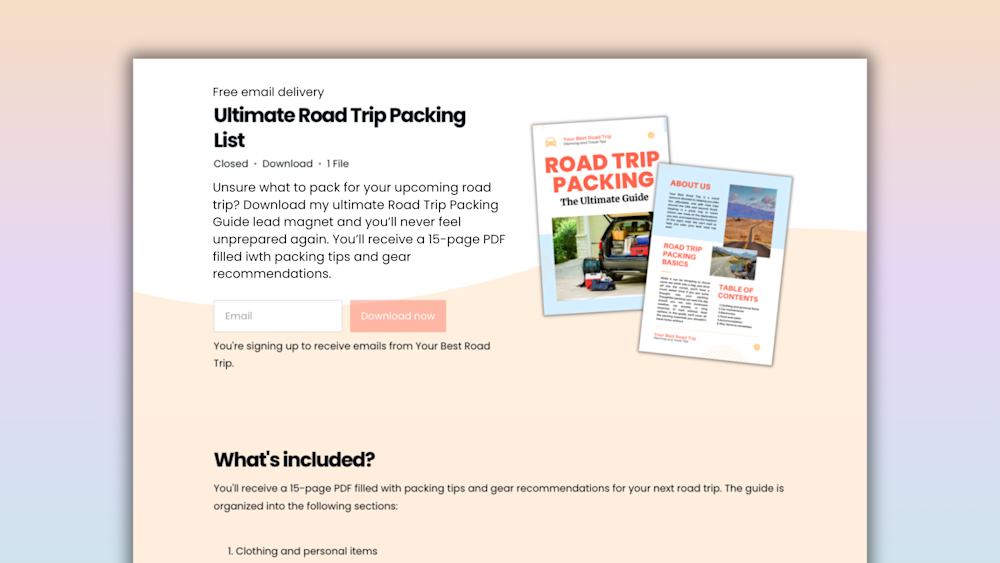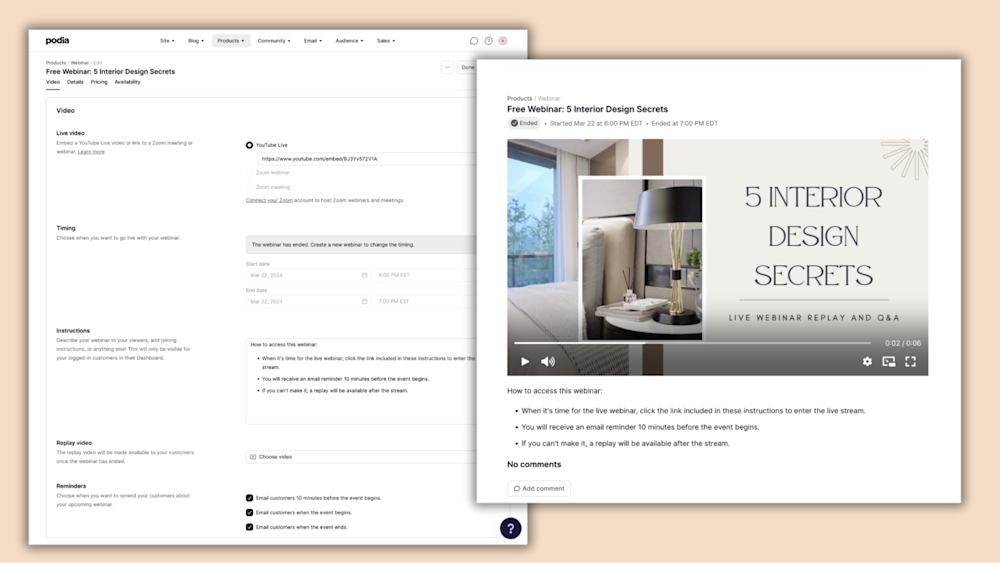You’ve put in the time to grow your social media audience. People engage with your content, share your posts, and even ask for advice. But how do you turn those likes and comments into income?
Many social media creators and entrepreneurs rely on brand deals and ad revenue to keep the lights on, but these methods can be challenging because someone else always has the final say on what you earn. Instead of appeasing algorithms and promoting other companies, the best way to monetize your social media is by building a business you control.
In this article, we’ll cover:
-
Why popular social media monetization strategies often fall short
-
15 ways to generate income from your social media audience on your terms
-
How to turn your social media into a tool that fuels your business and sends you reliable income
Here’s how to monetize your social media audience so it serves you, not the algorithm.
Why popular social media monetization strategies fall short
Many common ways to monetize your social media sound great… until you realize how much hustle they require.
Brand deals and sponsorships mean unstable income, constant pitching, and strict brand guidelines. Ad revenue requires a massive audience and can disappear overnight with platform policy changes.
But here’s the thing: growing an audience is one of the hardest parts of building a business. And you’ve already done that. Instead of relying on other platforms and companies, why not create products, services, and offers that you own?
When you build a business with your own digital products, your social media following becomes a powerful marketing tool, not your only income source. Plus, with email marketing, you can stay connected with your audience no matter what happens to algorithms or trends.
If you’re ready for more stability and control, here are 15 ways to monetize your social media — and turn your audience into a thriving business.
15 ideas for monetizing your social media
You don’t need millions of followers to make money from your content — you just need the right digital products and services to appeal to your audience. Here are some ideas for how to monetize social media that keep you (not third-party platforms) in the driver’s seat.
1. Offer digital downloads
Best for any following size. We’ve seen digital downloads work for pretty much any solo online business.
Digital downloads — like ebooks, checklists, cheat sheets, templates, and printables — are an easy way to sell value-packed resources without ongoing effort. In Podia, each digital download product can have several files and sections, so you can offer a single PDF or a whole set of resources depending on what you’re making.
And of course, you can use your social media platforms to promote your digital downloads to your audience.
Mark Moeykens from Big Mountain Studio, for example, uses his large following on X to promote his SwiftUI ebooks for developers.
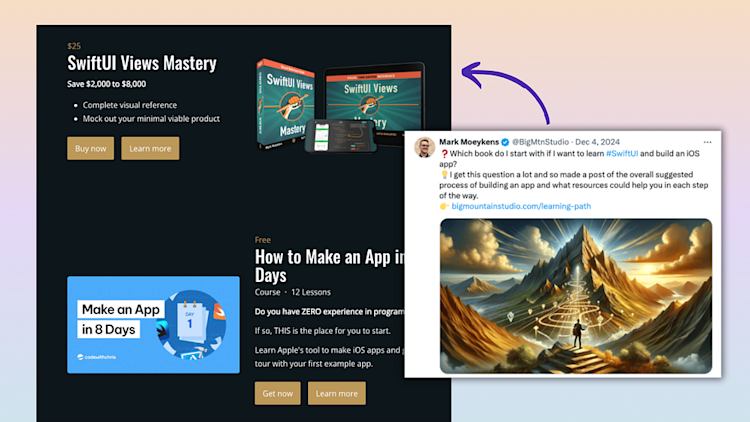
If you’re new to product creation and want to dip your toes in, creating a lower-priced digital download is a good place to start. You can make your download and add it to Podia in an afternoon and earn sales from it for years to come.
2. Sell an online course
Best for medium to large followings and people who are experts in a particular topic.
The next step up from a digital download is an online course. Courses let you combine text, video, audio, quizzes, and other interactive elements into neatly organized modules and lessons. This lets you share more information without overwhelming your students.
Courses are a good option for selling tutorials, ultimate guides, and detailed instructions about your favorite topics, and just like digital downloads, you can sell your course to unlimited people for as long as you like.
Podia lets you easily set up self-paced courses, cohort programs, courses with time limits, email drip courses, and any other configuration you can dream up, plus unlimited courses are included on all plans.
This is great for Instagram and Canva expert Em Connors, who sells several courses about branding, batch-creating content, and leveraging Instagram stories.
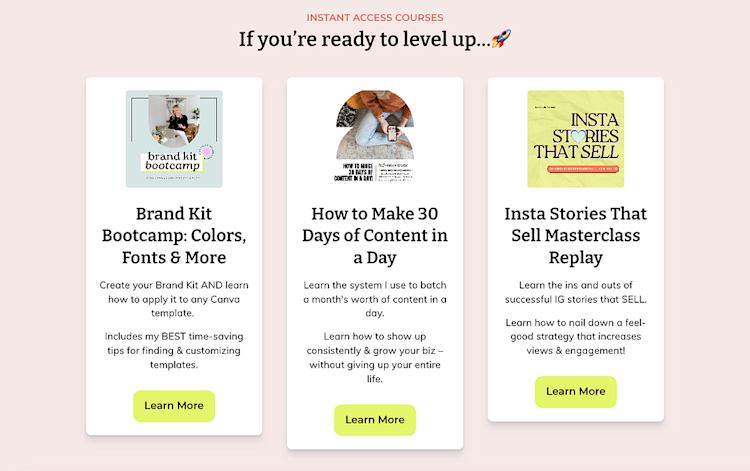
3. Run paid webinars or live workshops
Best if you prefer training in real-time with audience feedback and participation.
With a webinar, you can host live sessions where you teach a specific topic in-depth. This format works great for “ask me anything” sessions, deep dives, panels, or detailed tutorials. Because they happen at a set date and time, you’ll be able to answer audience questions right there.
If you run your webinar through Podia, you also have the option to upload a replay of the session and sell it as an “evergreen” or anytime webinar that can earn you money in the future.
That’s what sketchnote artist Emily Mills does with her workshops so people can enjoy them even after the go-live date. For instance, she previously hosted a “Sketchnoting in the Classroom” panel workshop for educators. The panelists discussed how they use sketchnoting in their classrooms, and Emily shared a post about the upcoming workshop on her Instagram account and other social channels.
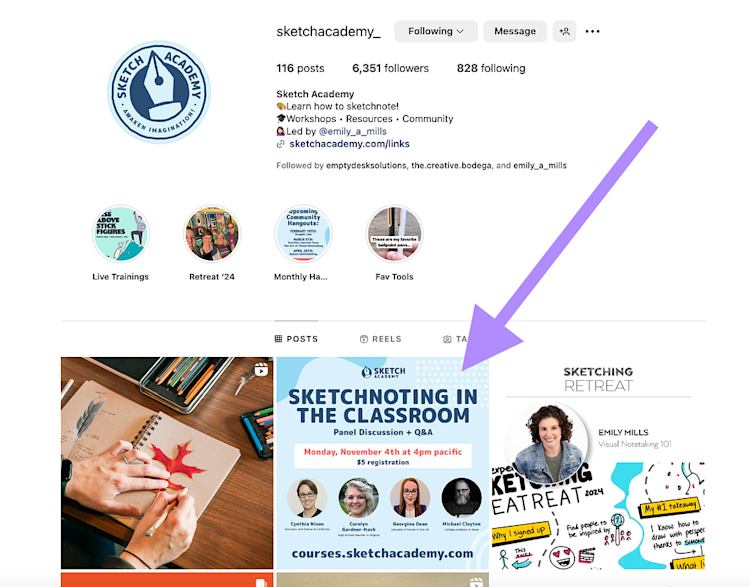
Even though the event has passed, the recording is still available for anyone to purchase on Emily’s website.
4. Launch a membership community
Best if you want to earn recurring revenue and enjoy building connections in a smaller setting.
A paid membership lets you build a community where members get exclusive content, live discussions, and more 1:1 attention from you. Your participants get to learn from you and each other, and you earn recurring income.
For example, career coach Angee Linsey runs a private job-search community where members get exclusive resources, resume and LinkedIn reviews, and a weekly live session.
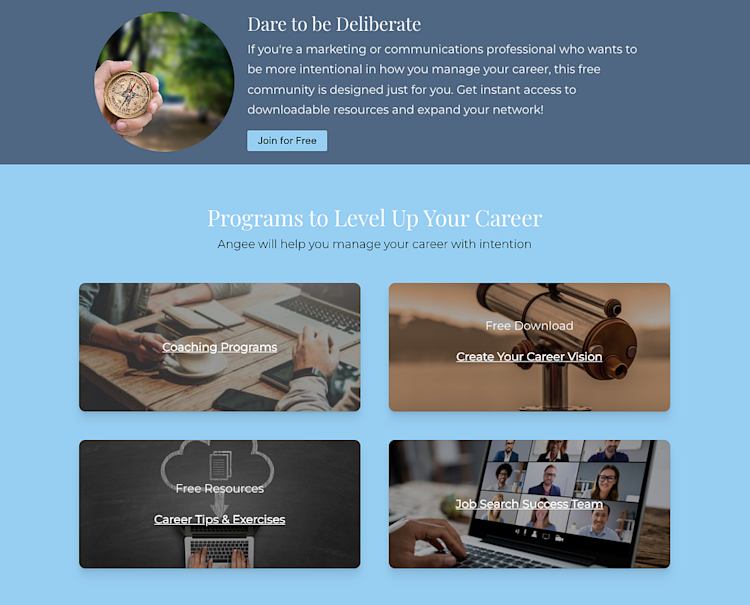
The smaller community setting lets entrepreneurs like Angee go more in-depth with each person, which would be unrealistic and overwhelming to do for everyone on a large social media platform.
5. Offer coaching sessions
Best for coaches or consultants who want to work with clients directly.
Coaching sessions make sense if you enjoy working with your audience 1:1. We’ve seen creators offer everything from business coaching to nutrition coaching to mindset coaching, and your coaching packages can be a great way to provide personalized guidance for your people.
You can work with people individually, or you can consider offering group coaching programs as your client list grows.
In a group setting, you can work with several people in the same amount of time you would normally work with one, increasing your hourly rate exponentially.
Take inspiration from photographer and entrepreneur Felicia Reed, for instance. Felicia offers a 12-month group coaching membership where solopreneurs can transform their mindsets and businesses.
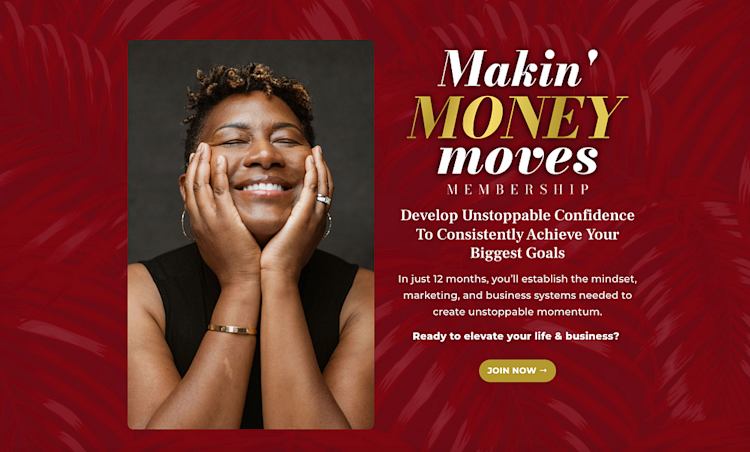
The group membership format allows Felicia to help more clients and provide more value, all at the same time.
6. Create a paid newsletter
Best if you love writing and want to share insights, advice, and resources on a regular basis.
A paid newsletter gives subscribers exclusive content, insights, or tutorials delivered straight to their inboxes. It’s a great option for creators who love writing but feel limited by the character counts (and shorter attention spans) on social media.
Velaria Hernandez from Vegi Vale is investing more time in her newsletter because, “I can’t say everything I need to say in 15 to 60 seconds, but newsletters have stood the test of time. I want something more timeless if I’m going to invest energy into it. If I followed the crowds, I would do TikTok and ignore the fact that it’s hard for me and that I don’t enjoy it.”
With a paid newsletter, you earn income for your work and your customers get to enjoy your very best writing with fewer distractions.
7. Sell bundled content packages
Best if you’ve already got lots of content, or if you want to increase the total value of each sale you make.
If you already have multiple digital products, bundle them together at a discounted price to increase value and boost sales. As an example, SEO for the rest of us founder Brendan Hufford offers standalone SEO courses as well as a bundle that includes courses and 1:1 coaching.
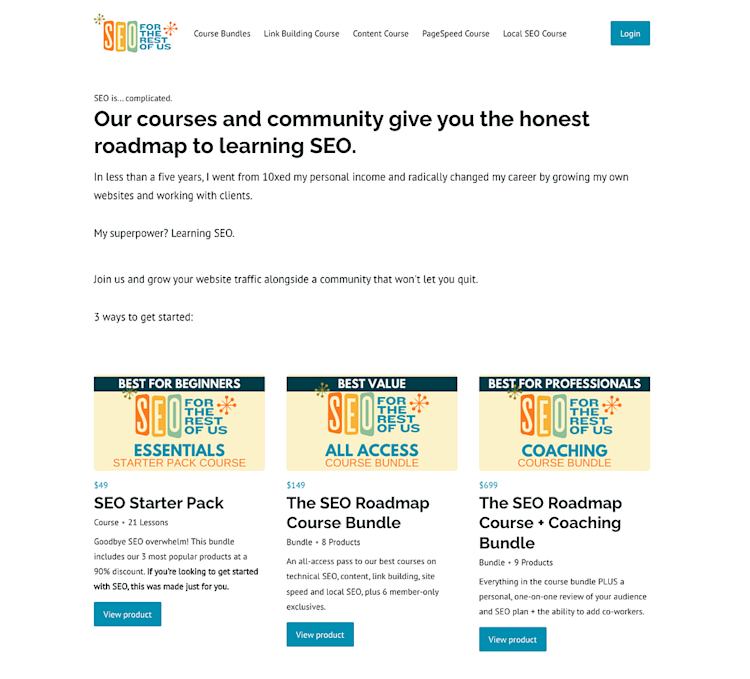
He shares SEO and marketing advice on his LinkedIn profile where he has over 40,000 followers, which naturally sends people toward his products, courses, and bundles.
In Podia, you can set up a bundle by simply selecting products you’ve already made, adding a price for the package, and publishing. The bundle will show up as a new product on your site that people can purchase.
8. Start a private podcast
Best for podcasters, but also for anyone who could talk for days about their favorite topics.
If you could start talking about your business today and keep going for the next six weeks, you would probably thrive as a podcaster.
You might already have a podcast, and if you do, you can monetize your online following by releasing subscriber-only episodes to monetize your fan base. But you don’t have to have an established podcast to share podcast episodes about your niche.
Whether it’s business insights, guided meditations, or coaching sessions, this model works great if you prefer to create audio content over written or video content and can be a fun break if you’re used to filming and writing.
For example, in addition to offering the courses and bundles I mentioned above, Brendan Hufford also has a private podcast about SEO that followers can buy for a one-time fee.
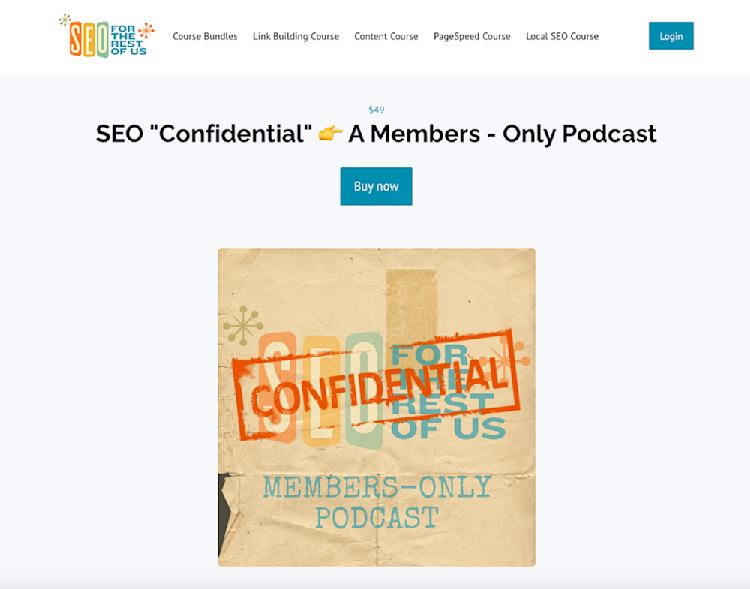
Whether you’re creating a limited podcast for a one-time fee or committing to regularly releasing bonus content, a private podcast is just another medium for getting your work out there.
9. Promote affiliate products
Best if you use paid products that your audience would also be interested in.
With affiliate marketing, you can earn commissions by recommending products and services you already use and love. This works best if those products and services are also things your audience would be into.
Your musician TikTok followers probably won’t be interested in your affiliate link for toothpaste, but they might be tempted by a link to your audio mixing software.
My advice: Choose tools that genuinely help your audience to make your promos flow seamlessly into your content.
10. Sell behind-the-scenes content
Best for building a Patreon-style donation community where fans can support you.
Give followers a glimpse behind the curtain by sharing your creative process, behind-the-scenes videos, content strategies, and case studies. Your biggest fans get to know you better in exchange for their financial support, which can be a one-time payment or a source of recurring revenue.
YouTubers and off-grid homesteaders Ashley and Jonathan Longnecker do this through their support community, which is hosted on Podia. Community members get early access to videos, behind-the-scenes updates, name drops in videos, merch, and access to digital products depending on the plan tier they choose.
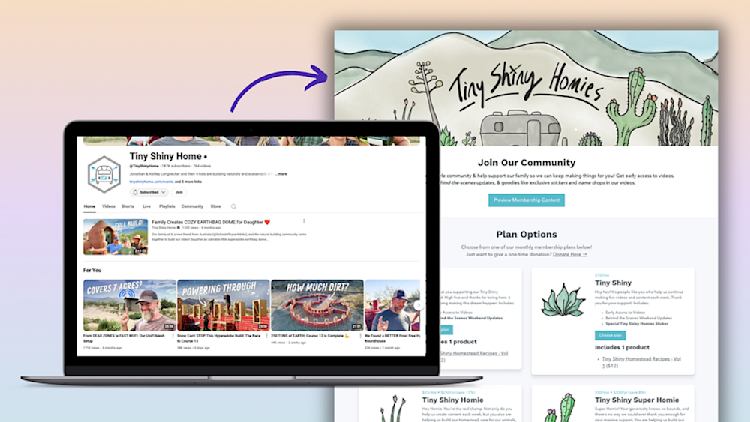
You can use this space to share any type of content you want, but early access, bonus content, and behind-the-scenes style content tend to do well for Podia solopreneurs.
11. License your expertise with templates
Best for entrepreneurs who have systems that can give others quick wins.
If you have a process others want to replicate, templates can be a great way to monetize your social media accounts. Canva templates, content calendars, budget spreadsheets, YouTube thumbnails, Pinterest pin design templates — anything you can offer to make your customers’ lives easier is a potential golden ticket.
Photography and marketing business Signature Edits, for instance, uses Podia to sell Lightroom presets, branding templates, and other resources for photographers. They show people how to use these presets and templates on their YouTube channel, which has over 175K subscribers.
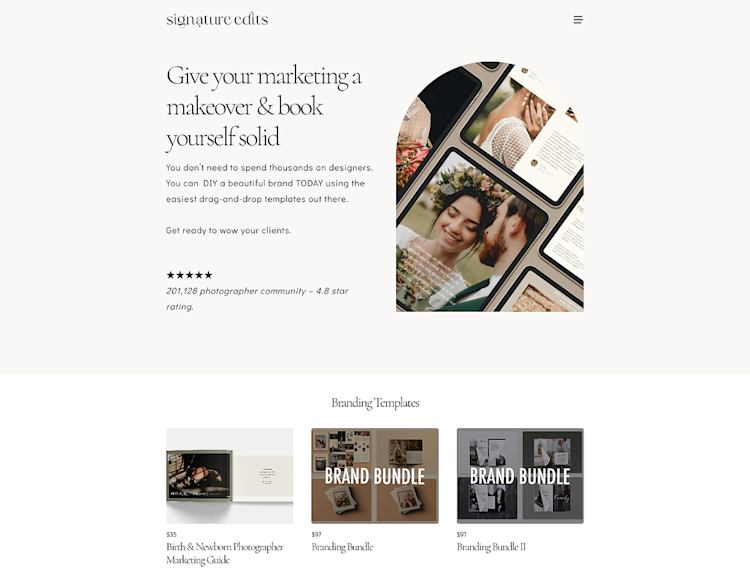
12. Create and sell stock media
Best for photographers, videographers, and musicians.
And speaking of photography, if you create visual or audio content, you can turn it into a digital product. Sell stock photos, video clips, or music tracks for creators and businesses to use. For instance, if you’ve got an eye for video, you could sell royalty-free B-roll footage to other content creators and ad agencies.
You can offer these products for sale on your own site or sell them through third-party stock photo sites.
13. Host a challenge with a paid entry
Best if you can help customers do something in a short amount of time and give them a quick win.
Run a structured challenge — like a 30-day fitness, writing, or productivity challenge — where members pay to participate. You can run this as a “start anytime” program that’s always available or run it in cohort sessions with time limits.
For instance, Andrea Henkels runs a 21-day self-care challenge that she’s built in a Podia course. This ties in perfectly with her YouTube channel and social media accounts about holistic wellness and caring for the mind and body.
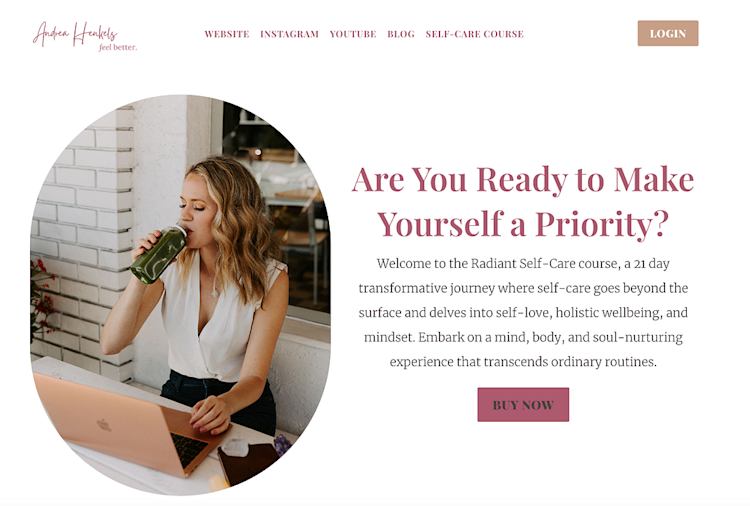
Challenges build engagement and community while providing tangible results for participants, so it’s a win-win.
14. Offer group trips or retreats
Best for travel creators, wellness influencers, and community-driven entrepreneurs.
If you’ve ever dreamed of going on a group trip with the people you’ve met through your business, planning a trip or retreat could be right up your alley.
This lends itself well for travel creators, but it could also work for wellness influencers (leading a yoga retreat, for example) or community builders (hosting a camping trip with local outdoor enthusiasts).
African history and language educator Tamkara Adun runs group trips to Nigeria and the Benin Republic for her audience, and she shares details of how to join these experiences on her website, newsletter, and online platforms.
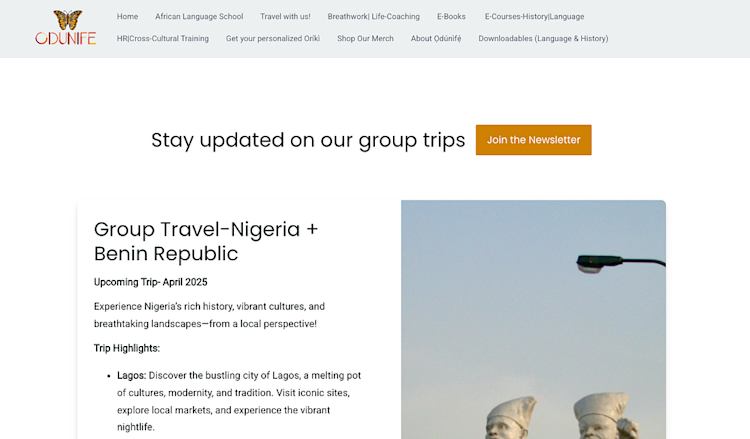
15. Host a virtual summit
Best for educators, thought leaders, community organizers, and people who have a large network in their niche.
If it’s not feasible to host an in-person experience, you can organize an online event with expert guest speakers, panels, breakout sessions, and networking opportunities. You can charge for ticket access, and your overhead costs will be much lower than an in-person event since you won’t have to rent out space to host everyone.
You can create a summit around any topic your audience enjoys. For example, early childhood education coach Anisha Angella runs a 3-day virtual summit for fellow early-years educators.
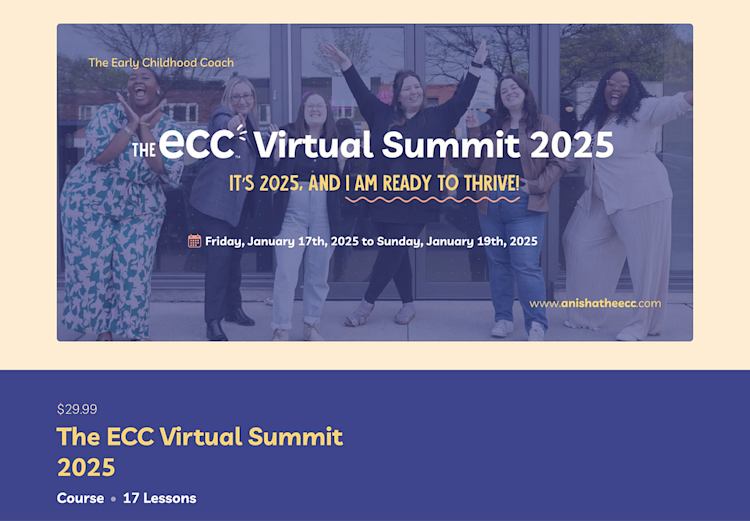
The event includes over a dozen speakers and a live Q&A session for participants, making this a great way for someone in the early childhood education space to grow their knowledge.
How to use these ideas to create a profitable online business with Podia
The best way to turn these ideas into a reliable business is to build a system that moves your audience off of social media and into your email list and digital products. Here’s the cheat sheet version of how to do that:
-
Create a free lead magnet that ties into your paid product. When your social media audience signs up for your freebie, you can add them to your email list. Learn more about making free lead magnets in this guide.
-
Set up an automated email welcome sequence to deliver their free product and share more info about your business. Spend some time getting to know each other to build trust. See how to set up an email automation in this help doc.
-
At the end of your email welcome sequence, send out an email letting them know about your paid products. At this point, they’ve already enjoyed your freebie and have seen the value in your work, so they’re more primed to make a purchase.
If they purchase at this point, fantastic! But if not, it’s no problem.
Now you’ve got a more reliable point of contact with this follower so build the relationship over time by consistently sharing valuable resources. Keep them updated about what’s going on in your business, let them know when you post new content to get more engagement, offer special coupons and discounts on upcoming products, and ask them what they’d like to see next.
One of the most valuable things you can do is use their feedback to shape your content and paid offers so you’re no longer making stuff and sending it into the social media void — instead, you’re making “add to cart” worthy products that your audience can’t wait to buy.
You’ve got the audience, now build a business
If you’ve already grown a social media following, the next step is to build a business that brings in money from that consistently.
Instead of relying on brand deals, ads, or platform algorithms, create your own digital products, courses, and experiences. This gives you more control over how you earn money — while still serving the audience that got you here in the first place.
You can use Podia to manage your entire business, including your products, website, email list, and customers. Everything is automatically connected so your people can move from strangers to followers to email subscribers to customers, all under one roof.
When you’re ready to take the next step, Podia gives you everything you need to turn your audience into customers — without platform headaches or complicated tech. Try it free for 30 days.


